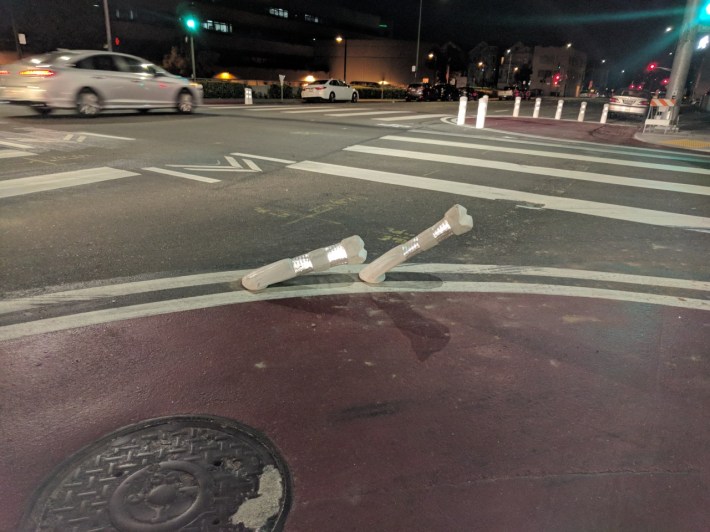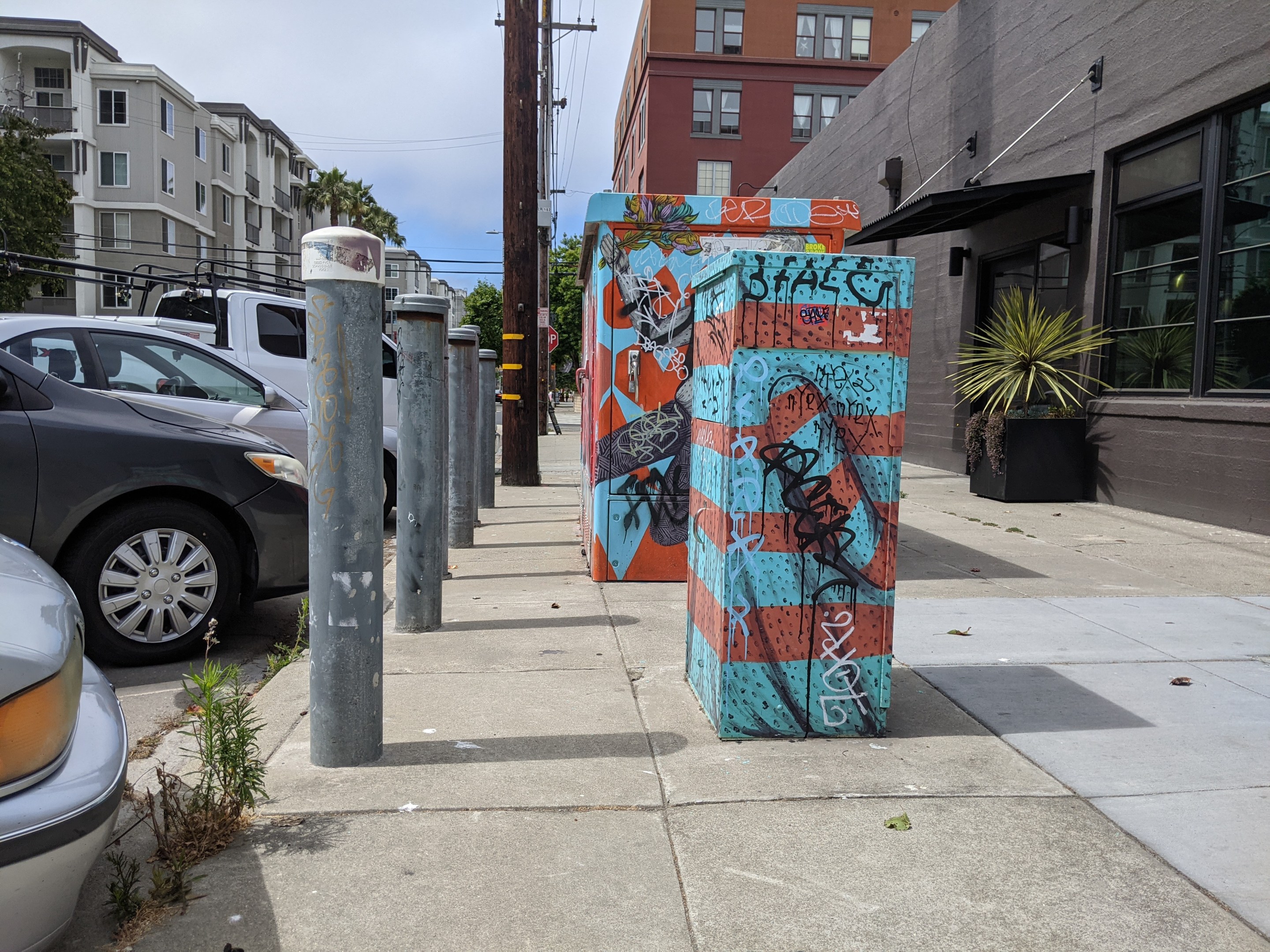A car thief was stopped--and a life was probably saved--by a humble Oakland utility box Monday afternoon. From the East Bay Times coverage
A 17-year-old vehicle theft suspect was arrested this week in Chinatown after a utility box and other items blocking his path forced him to stop the stolen Mercedes he was driving, authorities said.
This happened in the middle of the day, in a part of Oakland with a high percentage of elderly residents struggling to cross multi-lane streets full of speeding traffic. Unfortunately, motorist-versus-pedestrian collisions are common here, as are fatalities. If that utility box hadn't stopped the car thief, who was already fleeing the police and driving on the sidewalk, there's a decent chance he would have hit and killed a person.
This incident got me thinking: if someone tried to figure out human values just based on Bay Area street designs, they'd likely conclude that utility boxes are more important than pedestrians and cyclists.
Look at the lead image--a utility box in Oakland, near my home, with steel posts to protect them from errant motorists.
But when it comes to protecting people, Bay Area departments of transportation use plastic posts, paint, or, more commonly, nothing at all.

Sadly, it makes sense to protect utility boxes with steel and concrete posts because motorists drive and crash onto the sidewalk with alarming frequency. But if we can use solid steel posts to protect utilities, why can't we use them to protect vulnerable road users? Streetsblog has frequently made the point that if cities used concrete planters, posts, and other physical objects to force motorists to respect pedestrian crossings and take turns at safe speeds, collisions would be avoided.
But if we did that, there would be liability issues, I've been told by city officials. Cars driven by errant motorists might get damaged. Such are the values of the Bay Area. So it comes as no surprise that in the two months since Lovisa Svallingson, 29, was killed on Polk Street by a motorist who cut through a compromise, paint-only bike lane to run a red light, San Francisco officials have done nothing to make the intersection safer.

Maybe if the motorist had hit a utility box instead of a person, the city would make the intersection safe? Meanwhile, people just keep dying at the hands of errant motorists and badly designed streets.
Understandably, Bay Area pedestrian advocates have pushed back against having too many utility boxes on the sidewalk. But, given the apparent priorities of many of our transportation officials and politicians, maybe utility boxes are the only way to achieve Vision Zero. Maybe we can sneak our way to Vision Zero by putting utility boxes along all our pedestrian ROWs, bike lanes, and street corners.
Or maybe we can just elect and hire more people who act as if human life is more important than parking, driver convenience, and metal boxes full of equipment.





